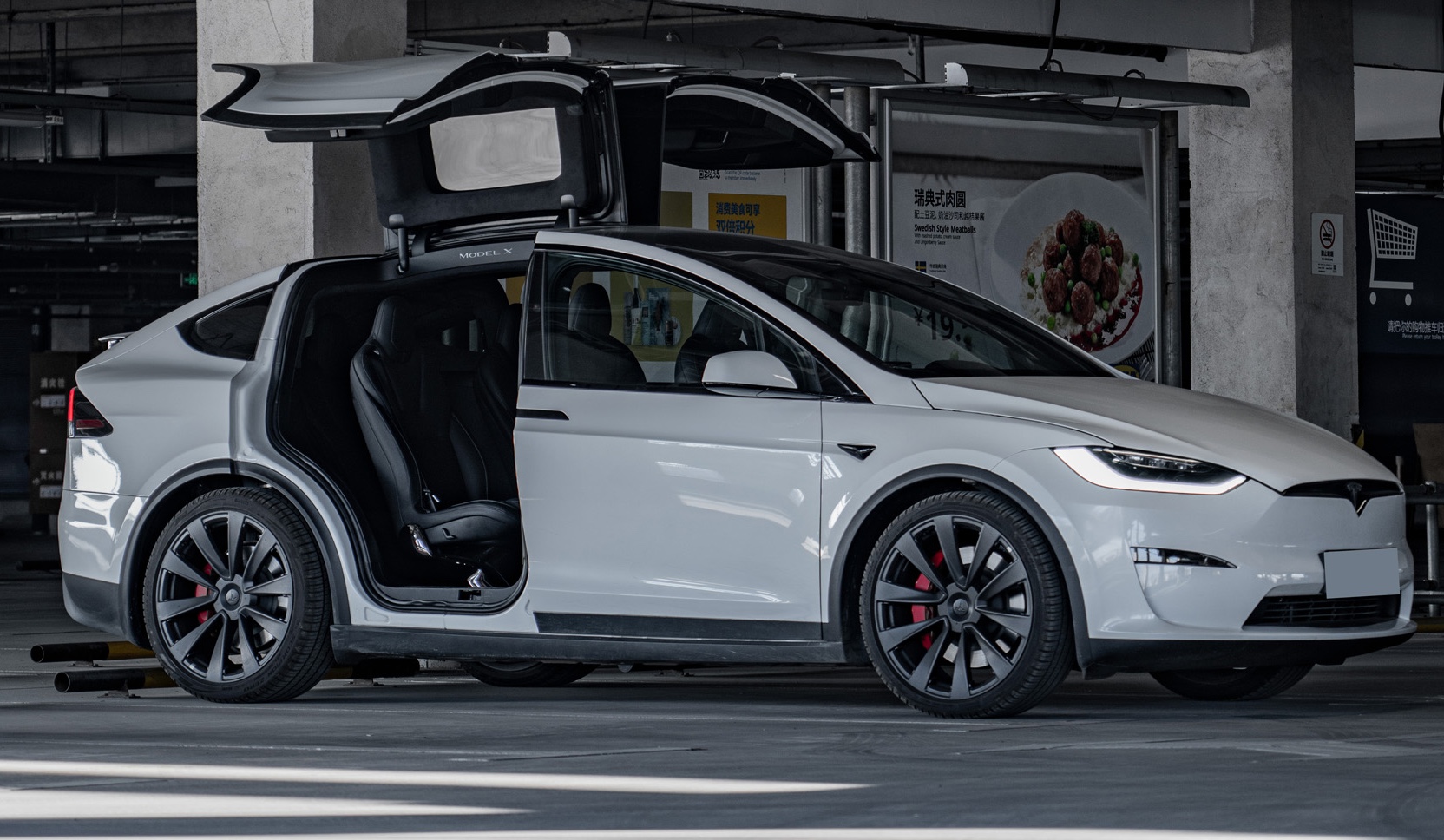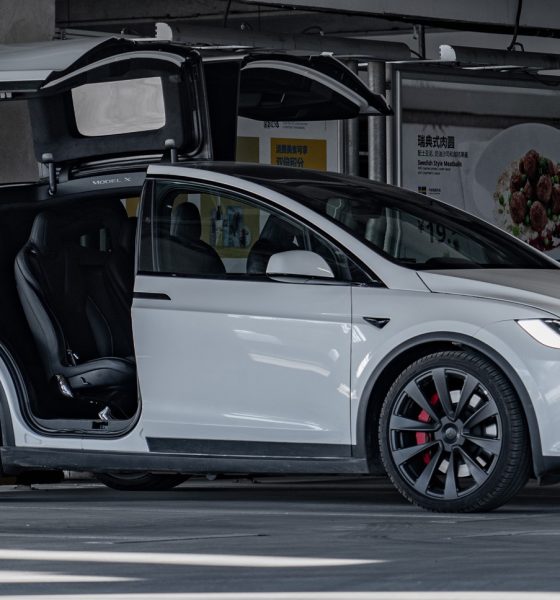Tesla (NASDAQ:TSLA) took a steep dive on the heels of the company’s Q4 and FY 2023 earnings call, dropping over 9% as of writing. With the company stating that volume growth would be tempered this year due to its focus on the next-generation platform and executives being quite vague about its guidance for 2024, analysts, including some TSLA bulls, are not happy.
Tesla actually had a record 2023, with vehicle sales growing nearly 40% year-over-year in 2023 to over 1.8 million units worldwide. Wall Street currently expects Tesla to post about 2.1 to 2.2 million vehicle sales for 2024, which would translate to a growth of about 20%. This number seems conservative and attainable enough, but Tesla simply maintained that its volume growth would be substantially lower than 2023’s ~40%.
Wedbush analyst Dan Ives shared his sentiments about Tesla’s earnings call, in a post on X. Ives described the call, which provided some high-level long-term views on the company, as another “train wreck” conference call. Following the earnings call, Ives adjusted his price target for Tesla from $350 to $315 per share, though he also noted that Wedbush remains bullish on the company.
Great to join @bsurveillance discussing another train wreck conf call in our view from Tesla and Musk lacking margin outlook and firm guidance for 24. Remain bullish for long term EV/AI vision but near term headwinds @lisaabramowicz1 @FerroTV @annmarie @BloombergTV https://t.co/E40CMG2Mg0— Dan Ives (@DivesTech) January 25, 2024
“We were dead wrong expecting Musk and team to step up like adults in the room on the call and give a strategic and financial overview of the ongoing price cuts, margin structure, and fluctuating demand. Instead, we got a high-level Tesla long-term view with another train wreck conference call,” Ives noted.
RBC analyst Tom Narayan also maintained his “Buy” rating on Tesla, though he lowered his price target from $300 to $297 per share. “We leave our delivery estimates unchanged after the vague guide, but lower our car gross margin expectations on less robust cost down opportunity,” he noted in a report. Narayan also pointed out that Tesla’s next-generation vehicle platform is still “many quarters away” from impacting the company’s numbers.
New $TSLA report from Adam Jonas: 5 thoughts post earnings call
“We reiterate our OW $TSLA rating ($345 price target) which offers over 80% upside from current levels which we believe is compelling in proportion to the investment level within our US auto coverage.” pic.twitter.com/TdZ2cLavdc— Sawyer Merritt (@SawyerMerritt) January 25, 2024
Morgan Stanley’s Adam Jonas, for his part, pointed out that Tesla almost did not provide any guidance during the call. He also observed that there were no “AI rabbits” pulled out of Tesla’s hat during the call, which was highlighted by Musk’s conservative comments about Dojo. Despite this, Morgan Stanley opted to maintain its “Overweight” rating and $345 price target on Tesla, with a bear case PT of $100 and a bull case PT of $500 per share.
While the sentiments surrounding Tesla’s Q4 and FY 2023 earnings call seem generally negative, some analysts opted to take a more optimistic stance on the company. Canaccord lowered its price target for Tesla from $267 to $234 per share, though the firm also noted that it is time for investors to be patient about the company. The firm noted that it remains bullish about Tesla’s long-term prospects.
NEWS: Canaccord Genuity has lowered its $TSLA price target to $234 (from $267), maintains a BUY rating.
They put out a good note:
“It’s time to be patient. The next-generation vehicle, FSD upgrades, margin improvement, and Optimus will likely bring an acceleration in revenue…— Sawyer Merritt (@SawyerMerritt) January 25, 2024
“It’s time to be patient. The next-generation vehicle, FSD upgrades, margin improvement, and Optimus will likely bring an acceleration in revenue growth. But not this year — 2024 will be subdued; probably a trough, but still relatively slow (we model ~18% y\y revenue growth). Growth curves are seldom smooth, and Tesla is no different.
“We are still quite bullish on Tesla’s long-term growth prospects. We think EVs will replace ICE vehicles despite recent countervailing narratives. We see vehicle autonomy as one of the highest value-creating technologies to be deployed. Ever. And Tesla, with its razor/ razorblade approach, is a leader in this real-world AI. We think Tesla is Apple on steroids as it focuses on manufacturing and a higher level of vertical integration. Tesla is THE sustainability behemoth, in our opinion,” the firm noted.
The critical metric, auto gross margins ex credits, came in at 17%, compared to the Street at 17.3%. I was expecting 16.7%.
While this missed the Street, it marks the end of four consecutive quarters of margin decline, up from 16.3% in the Sep-23.
Over this is a positive.— Gene Munster (@munster_gene) January 24, 2024
Longtime Tesla bull Gene Munster of Deepwater Asset Management also pointed out that Tesla’s auto gross margins for the past quarter ended a streak of dropping margins. “The critical metric, auto gross margins ex credits, came in at 17%, compared to the Street at 17.3%. I was expecting 16.7%. While this missed the Street, it marks the end of four consecutive quarters of margin decline, up from 16.3% in the Sep-23. Over, this is a positive,” Munster wrote on X.
Don’t hesitate to contact us with news tips. Just send a message to simon@teslarati.com to give us a heads up.

Elon Musk
Elon Musk confirms xAI’s purchase of five 380 MW natural gas turbines
The deal, which was confirmed by Musk on X, highlights xAI’s effort to aggressively scale its operations.

xAI, Elon Musk’s artificial intelligence startup, has purchased five additional 380 MW natural gas turbines from South Korea’s Doosan Enerbility to power its growing supercomputer clusters.
The deal, which was confirmed by Musk on X, highlights xAI’s effort to aggressively scale its operations.
xAI’s turbine deal details
News of xAI’s new turbines was shared on social media platform X, with user @SemiAnalysis_ stating that the turbines were produced by South Korea’s Doosan Enerbility. As noted in an Asian Business Daily report, Doosan Enerbility announced last October that it signed a contract to supply two 380 MW gas turbines for a major U.S. tech company. Doosan later noted in December that it secured an order for three more 380 MW gas turbines.
As per the X user, the gas turbines would power an additional 600,000+ GB200 NVL72 equivalent size cluster. This should make xAI’s facilities among the largest in the world. In a reply, Elon Musk confirmed that xAI did purchase the turbines. “True,” Musk wrote in a post on X.
xAI’s ambitions
Recent reports have indicated that xAI closed an upsized $20 billion Series E funding round, exceeding the initial $15 billion target to fuel rapid infrastructure scaling and AI product development. The funding, as per the AI startup, “will accelerate our world-leading infrastructure buildout, enable the rapid development and deployment of transformative AI products.”
The company also teased the rollout of its upcoming frontier AI model. “Looking ahead, Grok 5 is currently in training, and we are focused on launching innovative new consumer and enterprise products that harness the power of Grok, Colossus, and 𝕏 to transform how we live, work, and play,” xAI wrote in a post on its website.
Elon Musk
Elon Musk’s xAI closes upsized $20B Series E funding round
xAI announced the investment round in a post on its official website.

xAI has closed an upsized $20 billion Series E funding round, exceeding the initial $15 billion target to fuel rapid infrastructure scaling and AI product development.
xAI announced the investment round in a post on its official website.
A $20 billion Series E round
As noted by the artificial intelligence startup in its post, the Series E funding round attracted a diverse group of investors, including Valor Equity Partners, Stepstone Group, Fidelity Management & Research Company, Qatar Investment Authority, MGX, and Baron Capital Group, among others.
Strategic partners NVIDIA and Cisco Investments also continued support for building the world’s largest GPU clusters.
As xAI stated, “This financing will accelerate our world-leading infrastructure buildout, enable the rapid development and deployment of transformative AI products reaching billions of users, and fuel groundbreaking research advancing xAI’s core mission: Understanding the Universe.”
xAI’s core mission
Th Series E funding builds on xAI’s previous rounds, powering Grok advancements and massive compute expansions like the Memphis supercluster. The upsized demand reflects growing recognition of xAI’s potential in frontier AI.
xAI also highlighted several of its breakthroughs in 2025, from the buildout of Colossus I and II, which ended with over 1 million H100 GPU equivalents, and the rollout of the Grok 4 Series, Grok Voice, and Grok Imagine, among others. The company also confirmed that work is already underway to train the flagship large language model’s next iteration, Grok 5.
“Looking ahead, Grok 5 is currently in training, and we are focused on launching innovative new consumer and enterprise products that harness the power of Grok, Colossus, and 𝕏 to transform how we live, work, and play,” xAI wrote.
Investor's Corner
Tesla gets price target bump, citing growing lead in self-driving

Tesla (NASDAQ: TSLA) stock received a price target update from Pierre Ferragu of Wall Street firm New Street Research, citing the company’s growing lead in self-driving and autonomy.
On Tuesday, Ferragu bumped his price target from $520 to $600, stating that the consensus from the Consumer Electronics Show in Las Vegas was that Tesla’s lead in autonomy has been sustained, is growing, and sits at a multiple-year lead over its competitors.
CES 2026 validates Tesla’s FSD strategy, but there’s a big lag for rivals: analyst
“The signal from Vegas is loud and clear,” the analyst writes. “The industry isn’t catching up to Tesla; it is actively validating Tesla’s strategy…just with a 12-year lag.”
The note shows that the company’s prowess in vehicle autonomy is being solidified by lagging competitors that claim to have the best method. The only problem is that Tesla’s Vision-based approach, which it adopted back in 2022 with the Model 3 and Model Y initially, has been proven to be more effective than competitors’ approach, which utilizes other technology, such as LiDAR and sensors.
Currently, Tesla shares are sitting at around $433, as the company’s stock price closed at $432.96 on Tuesday afternoon.
Ferragu’s consensus on Tesla shares echoes that of other Wall Street analysts who are bullish on the company’s stock and position within the AI, autonomy, and robotics sector.
Dan Ives of Wedbush wrote in a note in mid-December that he anticipates Tesla having a massive 2026, and could reach a $3 trillion valuation this year, especially with the “AI chapter” taking hold of the narrative at the company.
Ives also said that the big step in the right direction for Tesla will be initiating production of the Cybercab, as well as expanding on the Robotaxi program through the next 12 months:
“…as full-scale volume production begins with the autonomous and robotics roadmap…The company has started to test the all-important Cybercab in Austin over the past few weeks, which is an incremental step towards launching in 2026 with important volume production of Cybercabs starting in April/May, which remains the golden goose in unlocking TSLA’s AI valuation.”
Tesla analyst breaks down delivery report: ‘A step in the right direction’
Tesla has transitioned from an automaker to a full-fledged AI company, and its Robotaxi and Cybercab programs, fueled by the Full Self-Driving suite, are leading the charge moving forward. In 2026, there are major goals the company has outlined. The first is removing Safety Drivers from vehicles in Austin, Texas, one of the areas where it operates a ride-hailing service within the U.S.
Ultimately, Tesla will aim to launch a Level 5 autonomy suite to the public in the coming years.










